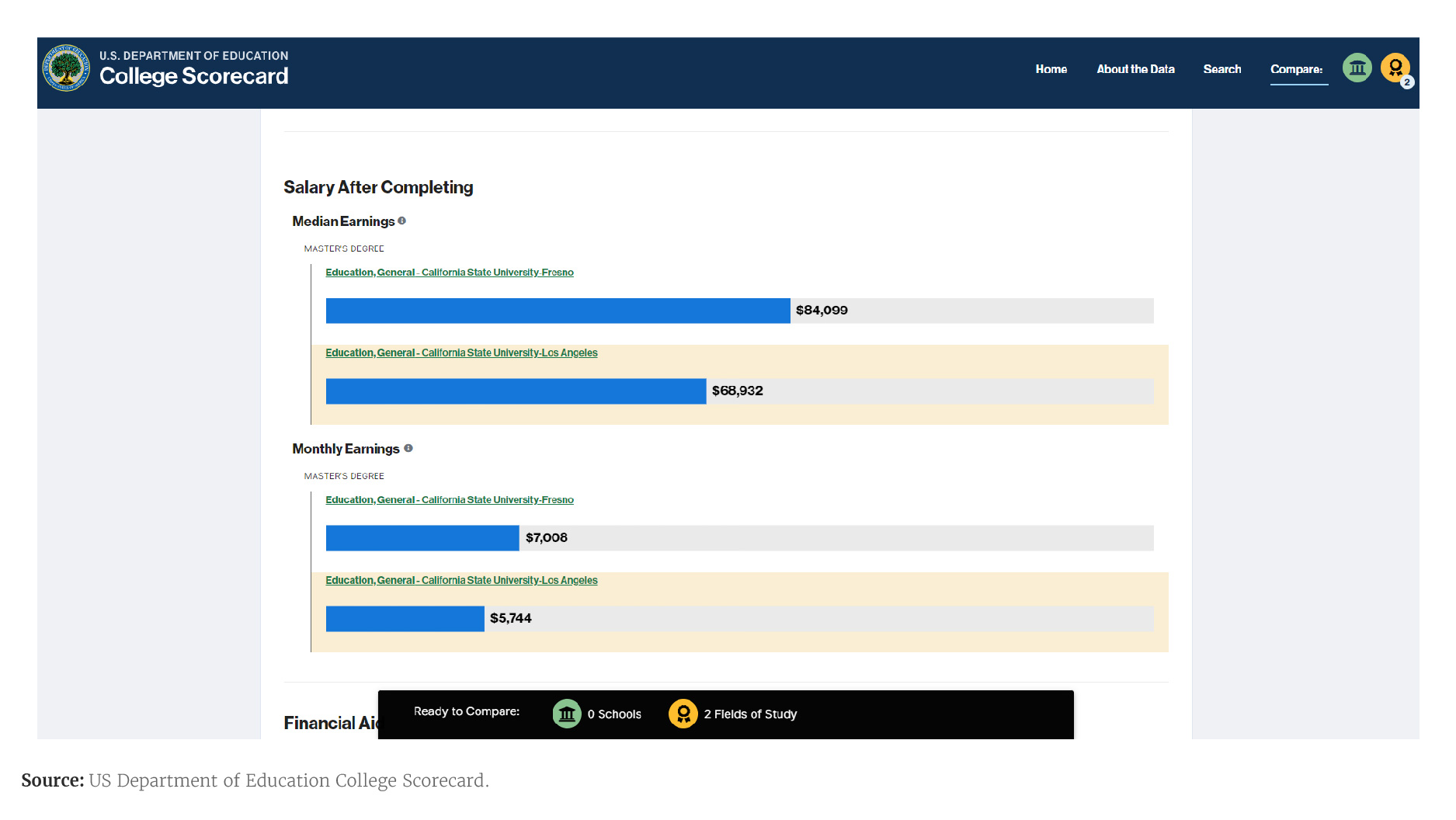New Wins for the College Scorecard

This spring, the US Department of Education (Department) took additional strides toward providing students and taxpayers the data they need to make the best decisions with their higher education dollars with new updates to the College Scorecard. The College Scorecard is a public-facing tool for helping prospective students compare colleges to choose the institution and program that will give them the best return on their investment. The data collected by the Department through the Integrated Postsecondary Data System (IPEDS) and provided in a user-friendly format in the College Scorecard allow students and families to get a clearer picture of how much a college can cost, the amount of debt they may take on to enroll, and their earning potential post-graduation—among other key indicia. In a time when college costs are continually rising, having access to this information is a crucial part of ensuring students can make informed decisions and enroll in higher education programs that leave them better, not worse, off.
The new updates to the College Scorecard make it clear that this is a high priority for the Biden Administration, and that the Department will continue to make transparency around student outcomes a major focus. The College Scorecard now includes median earnings of students four years after completion (previously, only three years were reflected), updated demographic data that allow students to see the race and ethnicity of full-time staff and student-to-faculty ratios, and the long-awaited addition of some graduate program data. These latest updates all contribute to a more robust data system and underscore the Department’s commitment to transparency for students and taxpayers.
Prior to this update, only undergraduate students could use the College Scorecard to consider their higher education options. Prospective graduate students did not have a comparable tool to find data on master’s, professional, or doctoral degree programs. Largely, what is known about graduate education outcomes is based on very limited public data or assumptions about the benefits of graduate education, despite the fact that graduate students now hold more than half of the total share of federal student debt—as we have previously noted. While still limited, the addition of graduate outcomes data is a major development in working toward greater transparency for this population of students.
Now, students considering graduate school have the ability to search for schools by degree type and field of study on the College Scorecard interface. They can then filter graduate program options by zip code or state, expected post-completion salary, and median student debt loads. For example, a prospective graduate student considering master’s degree programs in education can now compare programs at different institutions. As shown below, they can examine the available earnings data for the same program at California State University-Fresno and California State University-Los Angeles and use the tool to compare the median debt, monthly loan payment, and number of graduates from each school to decide which program is right for them.
Overall, graduate data remain limited, in large part because of student privacy requirements that prevent public reporting of aggregate data from programs that have fewer than 30 students enrolled. However, these newly available data points are more than prospective graduate students have previously been able to access and can complement what is already provided by institutions. This tool will be a game-changer in helping prospective graduate students, and all students considering attending higher education, select programs that meet their needs and will best set them up for success.
While more work lies ahead to increase data transparency, it’s great to see Secretary of Education Miguel Cardona, Under Secretary James Kvaal, and the Department taking a major step to demonstrate their commitment to making sure that students and taxpayers are well-informed by providing these updates to the College Scorecard.
Subscribe
Get updates whenever new content is added. We'll never share your email with anyone.

